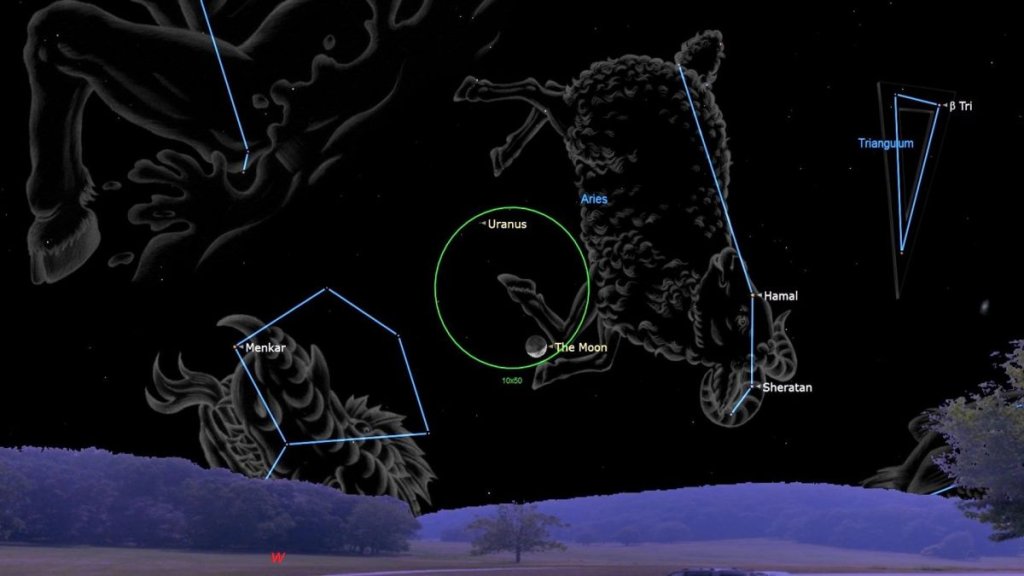
Use the moon to find Uranus in the night sky tonight (Image Credit: Space.com)
The moon makes its close approach to Uranus on Saturday (Feb. 25) providing an excellent guide for skywatchers to spot the seventh planet from the sun.
During the close approach, both the moon and Uranus will be in the constellation of Aries, the ram. According to In the Sky (opens in new tab) during the close approach, the 5-day-old moon will pass Uranus within around 1 degree. From New York City, the pairing of the moon and Uranus will be visible high in the sky to the west shortly after sunset until around 11:25 p.m. EST (0425 GMT), just before the moon sets.
The moon will have a magnitude of -11.4, with the minus prefix indicating a particularly bright object over Earth, while Uranus will be significantly dimmer with a magnitude of 5.8.
Related: Uranus: Facts about the ringed planet that sits on its side

Need a telescope to spot distant Uranus? We recommend the Celestron Astro Fi 102 (opens in new tab) as the top pick in our best beginner’s telescope guide. Don’t forget a good eyepiece!
The moon will have a right ascension of 02h49m00s during the close approach with a declination of +17°08′. Uranus, on the other hand, will have a right ascension of 02h50m50s and declination of +16°02′. The differing right ascensions mean that during the close approach, the two celestial objects won’t be in conjunction.
The seventh planet from the sun, Uranus is the solar system’s third largest world after Jupiter and Saturn. The planet is four times as wide as Earth and according to NASA (opens in new tab), if Earth was the size of an apple, Uranus would be as big as a basketball.

Despite the fact that the moon and Uranus will make a close approach on Saturday, they will still be too widely separated to be viewed in the narrow field of view of most telescopes, depending on magnification level and focal ratio. The close approach will be visible in the wider field of view of binoculars and should be observable with the naked eye in the right conditions, however. Uranus is just about visible to the eye at this time of year with dark skies and the right weather conditions.
As an ice giant, most of the material that comprises Uranus is an icy fluid of water, methane, and ammonia, below which is a solid rock core. At a distance of 1.8 billion miles (2.9 billion kilometers) from the sun, Uranus takes 84 Earth years to orbit our star.
That means since it was discovered by astronomer William Herschel in 1781, humanity has only seen the ice giant complete two orbits, once in 1865, and then in 1949. Its third orbit will be completed in 2033.
If you’re hoping to catch a glimpse of the moon and Uranus individually during the close encounter, our guides for the best telescopes are a great place to start. If you want to glimpse the two objects together, Space’s best binoculars guide should prove useful.
And if you’re looking to snap photos of the night sky, check out our guide on how to photograph the moon, as well as our best cameras for astrophotography and best lenses for astrophotography.
Editor’s Note: If you get a photo of distant Uranus and would like to share it with Space.com’s readers, send your photo(s), comments, and your name and location to spacephotos@space.com.





